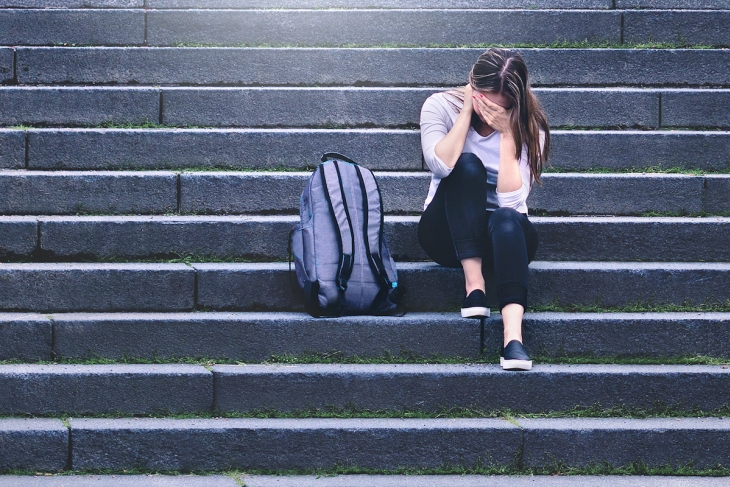School shootings are profoundly tragic—scarring not only the families whose children become victims, but casting a shadow over the lives, mental health, and outcomes of the surviving students. But evidence is also clear that it’s not only horrific mass shootings that can lead a child to miss school. Any feeling of not being safe can prompt children and teenagers to stay home.
Sadly, students have been telling us this for a long time—that their feelings of safety at school are strongly linked to their attendance. And we also know that pervasive safety concerns are driving disengagement from school and chronic absenteeism. Indeed, we’ve been asking students for more than a decade about how they view their school environments, and their responses about school safety have been disturbingly consistent.
We at the Thomas B. Fordham Institute recently conducted a study in collaboration with Jing Liu, an education policy professor with the University of Maryland, to isolate and measure a school’s impact on attendance. Analyzing sixteen years of California data, he found a school’s effect on attendance was positively correlated with students’ perceptions of its climate, and most powerfully with their belief that schools are safe, adults are trustworthy, and behavioral expectations are clear.
These findings contribute to a broader consensus in the literature that perceptions of school climate and absences are linked. For instance, one study that surveyed nearly 600 public high school students in the South showed that 25 percent felt unsafe and nearly 15 percent had avoided school in the last month because of it. Yet the same study found that positive perceptions of the school environment (not only physical safety, but also clear rules, a sense of belonging, and positive parent-teacher relations) were associated with lower rates of absenteeism. Other research has similarly identified connections between students’ perceptions of school climate and absence rates.
More specifically, we know that students’ fears about safety in school often drive chronic absenteeism. In one study, the University of South Florida’s Amber Brundage surveyed chronically absent sixth through twelfth graders across eight states. When asked why they had missed so much school, students consistently pointed to fears around safety. Another study using data from the National Youth Risk Behavior Survey found that among the 5 percent of students who had avoided school due to safety concerns, their absences were often strongly related to fears of being threatened with a weapon, having one’s property damaged or stolen, and being bullied or cyberbullied at school. A third study indicated the link between safety concerns and absence was particularly strong among Black, Hispanic, and LGBT students.
Other studies comparing various strategies to combat absenteeism underscore the importance of school safety. For instance, experts who authored a summary of best practices published by EdResearch for Recovery emphasized that a focus on safety and school climate is among the most effective interventions. Additionally, a meta-analysis evaluating multiple evidence-based school attendance strategies found that student behavioral interventions were somewhat more effective. These included a wide array of interventions, ranging from peer and adult mentoring and case management services to school resource officers and physical security measures.
So, yes, let’s have and act on those impassioned conversations about how to end the travesty of mass shootings. But as a new school year begins and we rethink how to better protect our students, let’s ensure all schools are places where children feel safe and behavioral expectations are clear.
Editor’s note: This was first published by the San Antonio Express-News.





